#indian anthropology
Explore tagged Tumblr posts
Link
0 notes
Text
Emerald Spectacles from India, c. 1620-1660 CE: the lenses of these spectacles were cut from a single 300-carat emerald, and it was believed that they possessed mystical properties
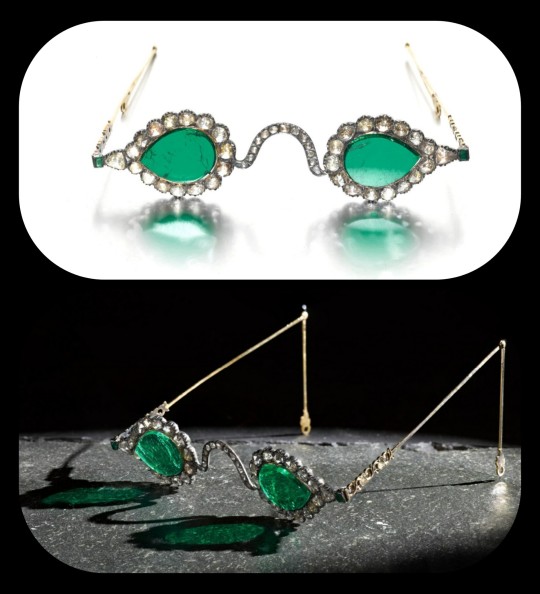
These eyeglasses are also known by the name "Astaneh-e ferdaws," meaning "Gate of Paradise," based on the symbolic associations between the color green and the concept of spiritual salvation/Paradise. That symbolism (which is rooted in Islamic tradition) was especially popular in Mughal-era India, where the spectacles were made.

The lenses were crafted from two thin slices of the same emerald. Together, the lenses have a combined weight of about 27 carats, but given the precision, size, and shape of each lens, experts believe that the original emerald likely weighed in excess of 300 carats (more than sixty grams) before it was cleaved down in order to produce the lenses. The emerald was sourced from a mine in Muzo, Colombia, and it was then transported across the Atlantic by Spanish or Portuguese merchants.
Each lens is encircled by a series of rose-cut diamonds, which run along an ornate frame made of gold and silver. The diamond-studded frame was added in the 1890s, when the original prince-nez design was fitted with more modern frames.
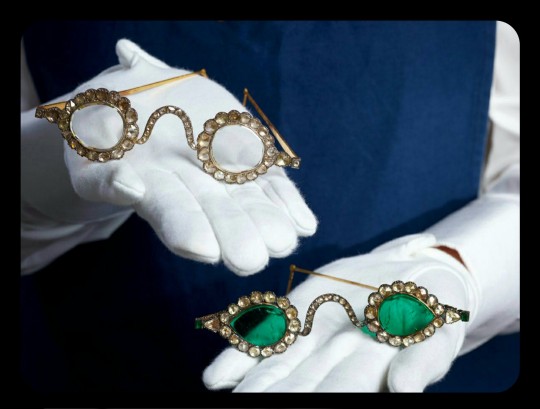
The emerald eyeglasses have long been paired with a second set of spectacles, and they were almost certainly commissioned by the same patron. This second pair is known as "Halqeh-e nur," or the "Halo of Light."
The Halo of Light features lenses that were made from slices of diamond. The diamond lenses were cleaved from a single stone, just like the emerald lenses, with the diamond itself being sourced from a mine in Southern India. It's estimated that the original, uncut diamond would have weighed about 200-300 carats, which would make it one of the largest uncut diamonds ever found.
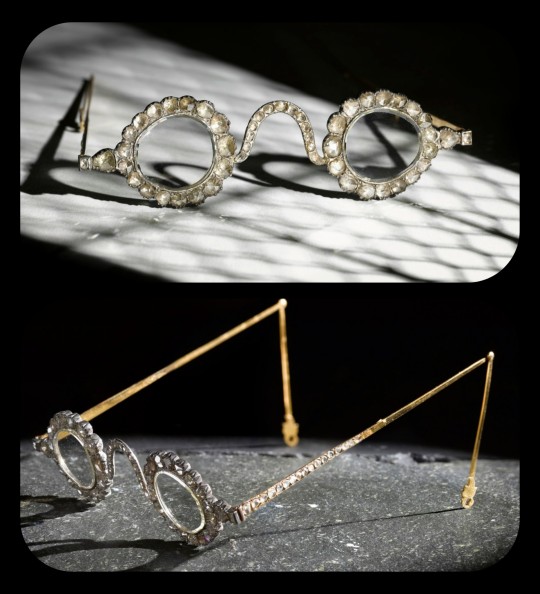
The lenses are so clear and so smoothly cut that it sometimes looks like they're not even there.
Both sets of spectacles date back to the mid-1600s, and it's generally believed that they were commissioned by a Mughal emperor or prince. The identity of that person is still a bit of a mystery, but it has been widely speculated that the patron was Shah Jahan -- the Mughal ruler who famously commissioned the Taj Mahal after the death of his wife, Mumtaz Mahal. Shah Jahan did rule as the Mughal emperor from about 1628 to 1658.
The emerald and diamond lenses may have been chosen for symbolic, sentimental, and/or cultural reasons, or they may have been chosen simply because they're pretty and extravagant; the original meaning and purpose behind the design is still unclear. Experts do believe that the eyeglasses were designed to be worn by someone, though.
At times, it was believed that the spectacles had spiritual properties, like the ability to promote healing, to ward off evil, to impart wisdom, and to bring the wearer closer to enlightenment. Those beliefs are largely based on the spiritual significance that emeralds and diamonds can have within certain Indic and Islamic traditions -- emeralds may be viewed as an emblem of Paradise, salvation, healing, cleansing, and eternal life, while diamonds are similarly associated with enlightenment, wisdom, celestial light, and mysticism.
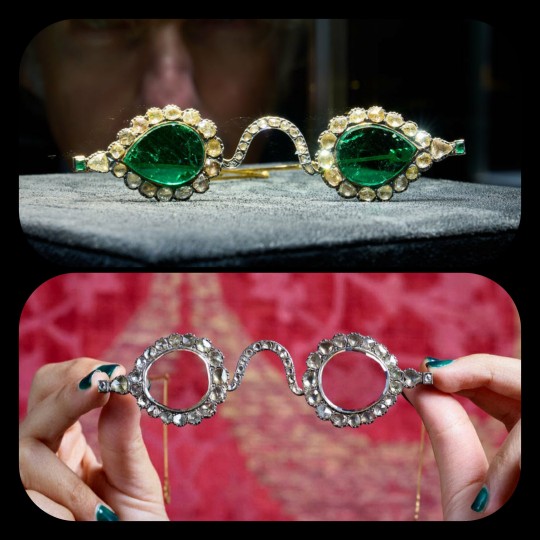
The Gate of Paradise and the Halo of Light were both kept in the collections of a wealthy Indian family until 1980, when they were sold to private collectors, and they were then put up for auction once again in 2021. They were most recently valued at about $2 million to $3.4 million per pair.
Sources & More Info:
Sotheby's: Mughal Spectacles
Architectural Digest of India: At Sotheby's auction, Mughal-era eyeglasses made of diamond and emerald create a stir
Only Natural Diamonds: Auspicious Sight & the Halqeh-e Nur Spectacles
The Royal Society Publishing: Cleaving the Halqeh-Ye Nur Diamonds
Gemological Institution of America: Two Antique Mughal Spectacles with Gemstone Lenses
Manuscript: From Satan's Crown to the Holy Grail: emeralds in myth, magic, and history
CNN: The $3.5 million Spectacles Said to Ward off Evil
BBC: Rare Mughal Era Spectacles to be Auctioned by Sotheby's
#history#archaeology#artifact#mughal#india#17th century#art#emerald#diamond#glasses#indian lore#islam#religion#mysticism#indian history#anthropology#spirituality#fashion
5K notes
·
View notes
Text
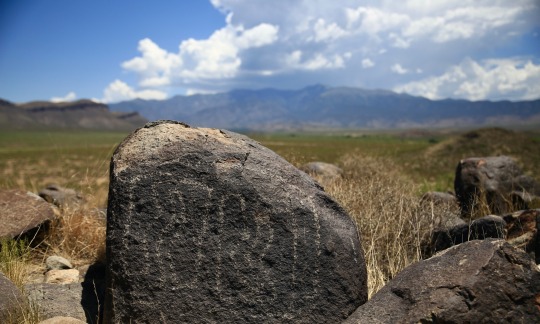

#three rivers petroglyphs#new mexico#sierra Blanca#adventure#travel#my photo#southwest#desert#mountains#photography#aesthetic#nature#ancient ones#petroglyphs#native americans#Indians#American Indians#history#anthropology#archaeology#storm#monsoon#summer
279 notes
·
View notes
Text
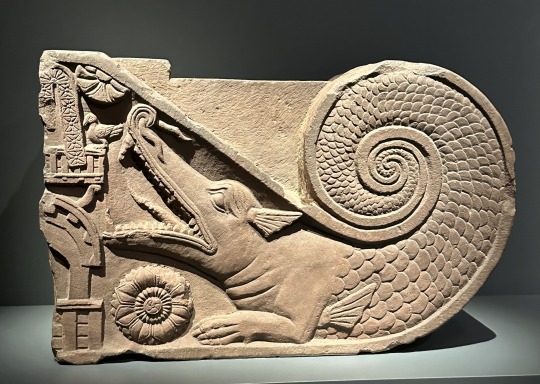


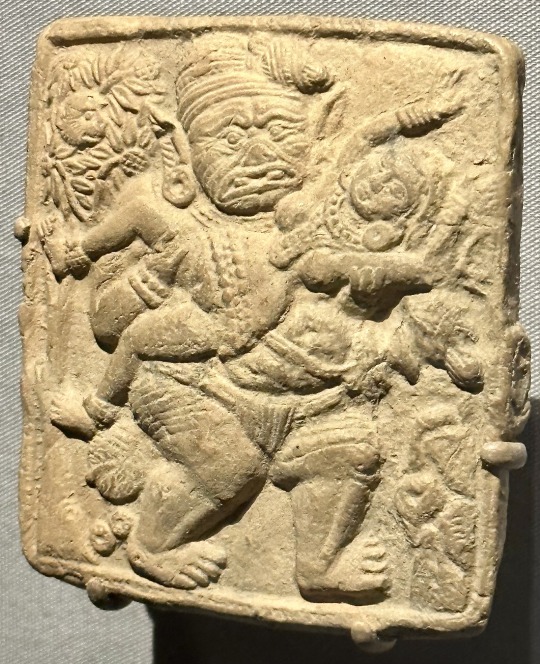






The Metropolitan Museum of Art
#art history#art#archaeology#academia#anthropology#renaissance#museum#medieval art#ancient#painting#sculpture#indian art#pompeii
24 notes
·
View notes
Text
Reaching out the the tumblr community of archaeologists, anthropologists because ive searched and searched on google and cannot for the life of me find out what this could be.
Found it on a trek with friends and we have varying theories. The curiousity is just eating at me so please help🥺
@mindblowingscience @archaeology @archaeologicalnews @anthrocentric @historicity-was-already-taken

204 notes
·
View notes
Text
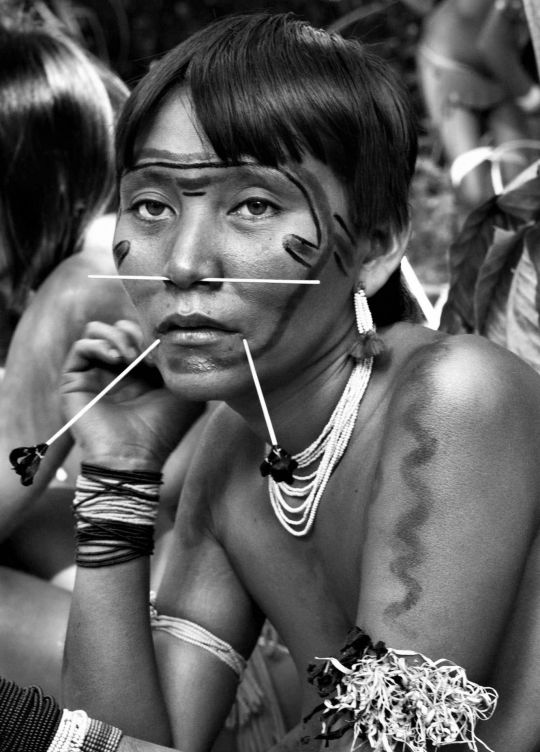
Thanks to: @hypatia--of
Yanomami woman, Amazonia, Brazil. Photo by Sebastião Salgado
539 notes
·
View notes
Text
03.04.23
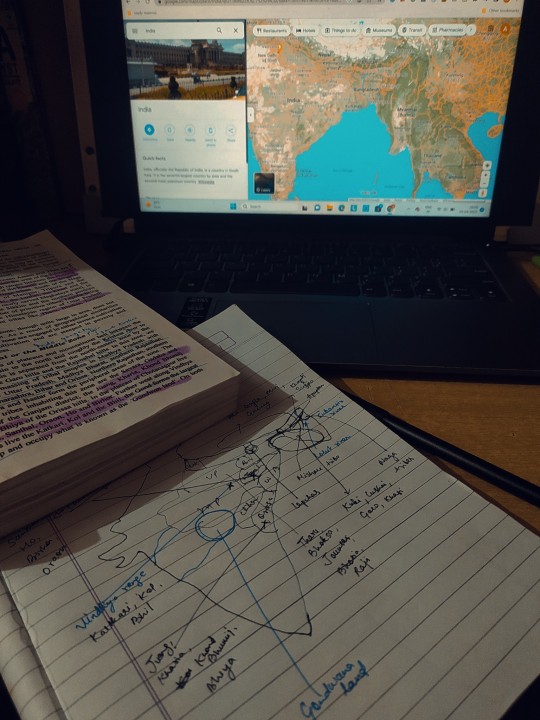

Sleep deprived. But maps were fun.
#100 days of productivity#indian studyblr#study blog#study space#studyblr community#studying#studyinspo#upsc#hustle#study aesthetic#new studyblr#studyblr#study tips#studyspo#study gram#study inspiration#anthropology#indian#april 2023#upscpreparation#upscexam#desi academia
125 notes
·
View notes
Photo

Kiowa life in early to mid 20th century southwest Oklahoma, told/revealed/explained by Henrietta Tongkeamha and her son, Raymond Tongkeamha - - pictured above.
(via 9781496228116.jpg (1650×2550))
#Benjamin R. Kracht#Henrietta Tongkeamha#Raymond Tongkeamha#Kiowa Indian Nation#Anthropology#Indigenous America
51 notes
·
View notes
Text
youtube
#historia civilis#iroquois#Haudenosaunee#north america#indigenous#american indian#indigenous american history#first nations#iroquois confederacy#history#anthropology#culture#government#native americans#voting#Youtube#ndn
3 notes
·
View notes
Text










In Maharashtra, India, during Diwali festival, it is a tradition to build miniature forts with stones, rocks, clay and soil; in front yards of homes. These miniature forts should mimic the scenario as it was during King Shivaji's time. Children enthusiastically build these forts, and decorate them with miniature greenery, soldiers (depicted in attire similar to that present during Shivaji Maharaj's time), wild animals (on fort). These forts are built in different styles and varying sizes.
The miniatures - to be placed on forts - also remain available in markets during and just before Diwali. Original idea included building these forts with materials such as stones, rocks, soil, clay. Where, first, rocks and stones are placed, and then clay is plastered over it. Gunnysacks are also used, with later plastering of clay on it.
With time and in recent years 'readymade' forts have become available in market, many made from materials such as Plaster of Paris. Other miniatures too, such as toys, soldiers, animals are now seen made up of plastic and other material. Shortage of open spaces; lessening the efforts required; unavailability of stones, rocks, soil, clay in cities; urban lifestyle, are some of the reasons responsible for these changes.
During one of my visits to a village nearby Satara, I got opportunity to witness such a fort (in the photos) made by village kids.
Activities like these boost creativity in children.
Looking at these miniature forts, one can imagine the ideas and efforts of children or people who created them. And one can also imagine the immense ideas and efforts of people who created the real ones!
- Dhairyasheel Dayal
#forts#maharashtra forts#forts of maharashtra#culture#traditional art#art#artwork#miniature fort#maharashtra#village life#village#rural life#rural#diwali#diwali decoration#anthropology#man and nature#human and nature#diwali forts#indian culture#maharashtra culture#indian traditions#maharashtra traditions#rural photography#village people#village photography#photography
2 notes
·
View notes
Text
fellow writers and artists, I'm looking for a list of women who were wronged and/or painted as the bad guys in mythology. example: Medusa (Greek mythology), Ahalya (Hindu mythology), Lilith (Christianity), etc.
Please drop the names of these women (and this is inclusive of trans women/AFAB individuals) + which culture/religion/mythology/epic they come from. Also if there's a cultural significance, pls let me know what is it? For example; the Hindu mythology that Ahalya's story is - Ramayan - is also the folktale behind one of the most celebrated festivals in India, Dussehra and Diwali. We hear her story once, and then rarely hear of her again. We also have Sita, Kaikeyi and many more women who have been wronged but are also to blame for many things in Ramayana. I have beef with Ram.
It's alright if these myths are also popular, and if there's an existing feminist retelling. Feel free to info dump about this very niche thing!
#greek mythology#indian mythology#ramayana#mahabharata#medusa#christianity#theology#religion#culture#art#writing#anthropology
13 notes
·
View notes
Link
0 notes
Photo
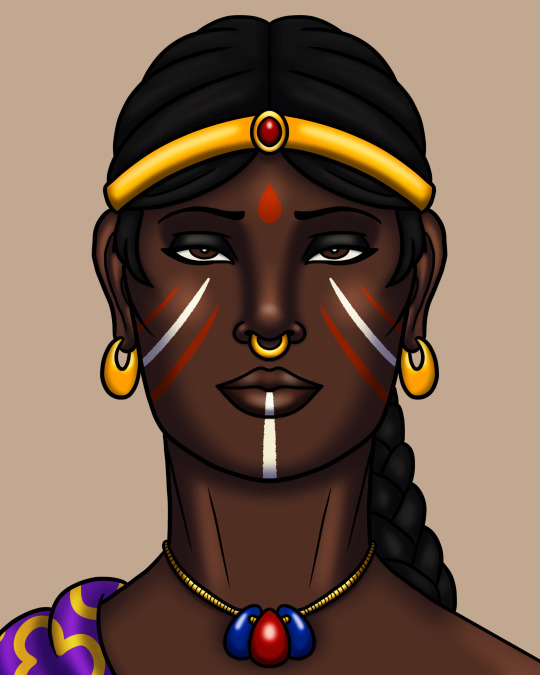
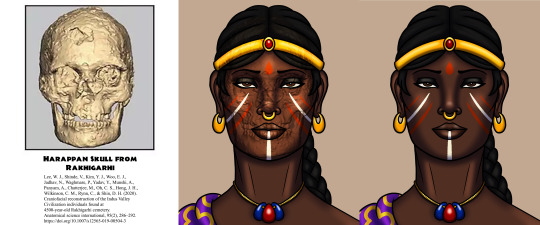
The subject of this reconstruction is a woman from the Harappan civilization who lived between 2,200 and 2,600 years ago. Developing along the Indus River in what are now Pakistan and northern India, the Harappans represent the oldest known urban civilization in the South Asian region.
Source of skull image:
Lee, W. J., Shinde, V., Kim, Y. J., Woo, E. J., Jadhav, N., Waghmare, P., Yadav, Y., Munshi, A., Panyam, A., Chatterjee, M., Oh, C. S., Hong, J. H., Wilkinson, C. M., Rynn, C., & Shin, D. H. (2020). Craniofacial reconstruction of the Indus Valley Civilization individuals found at 4500-year-old Rakhigarhi cemetery. Anatomical science international, 95(2), 286–292.
#harappan#Indus Valley Civilization#indian#south asian#dravidian#dark skin#woman of color#woc#portrait#reconstruction#anthropology#digital art#art
16 notes
·
View notes
Text
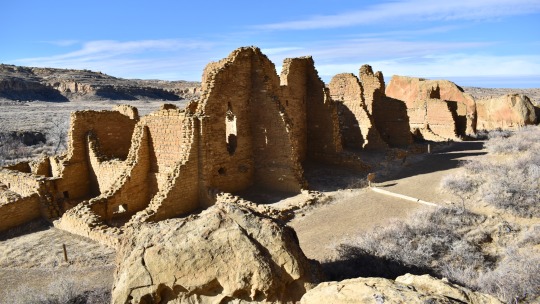

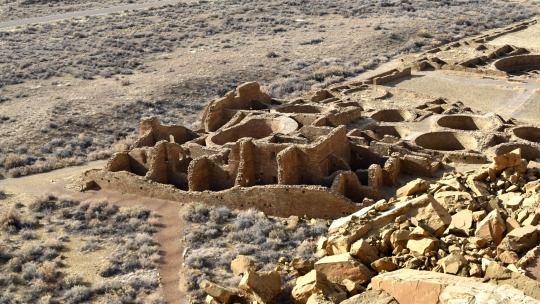
#chaco culture national historical park#chaco canyon#archaeology#anthropology#history#Indians#american indians#native Americans#anasazi#Chaco#ancestral puebloans#adventure#travel#my photo#southwest#desert#new mexico
230 notes
·
View notes
Text
This is no joke such a colonizer Western viewpoint- and by that I don’t mean it’s aggressive towards any indigenous people or ‘problematic,’ I mean to even grasp the humor in this heavily relies on a tension of ‘irony’ built by the indoctrinated notion that sexuality is ‘bad’ or ‘dirty’ and not healing, like say, is a central tenet of Tantra.
A person looking at this without this notion would be like ‘but why is the inside any different from the outside’? What’s the ‘hiding’ part?
Or at the very least, it would be more like a chocolate out of an assortment that may contain mousse, and that’s entirely normal, yet it’s supposed to be a surprise if it does?
That sort of thing.
If someone were raised with no contact with a somewhat astray modern conceptualization of Judaic values, this meme, as a ‘joke’, in its aims, would make no sense.
Interesting to ponder.
Made this for u 💝
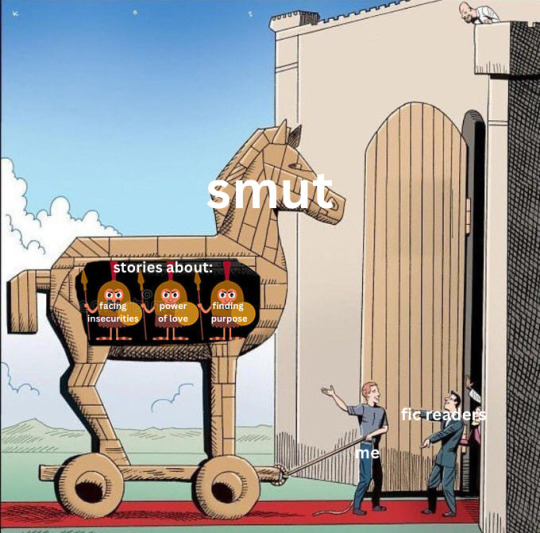
#tantra#psychology#indian culture#vedic religions#decolonize your mind#anthropology#philosophy#spirituality
67K notes
·
View notes